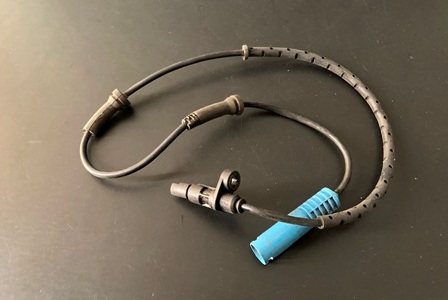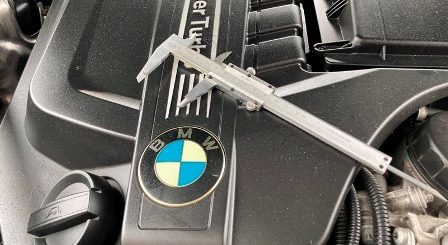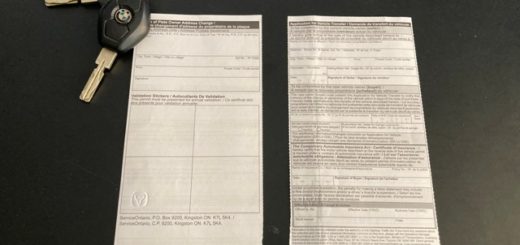How ABS Sensors Work
How ABS Sensors Work: ABS or Anti-Lock Braking System is a vehicle safety system designed to prevent wheels from locking up during hard braking and avert uncontrolled vehicle sliding. ABS also allows driver to retain control of vehicle and steer clear around obstacles during braking.
ABS system collects information about wheel status and speed using sensors located on wheel hub of each wheel. Rotational movements of vehicle wheels are transmitted to ABS control module utilizing ABS sensors located on each wheel hub.
Operation Principles of ABS by sensor and Abs control unit manufacturer Bosch.
Passive sensors and Active ABS sensors
Passive Abs Sensors
Older technology which does not need a power source and works by using a permanent magnet and magnetic coil. Transmission of electrical impulses is achieved by utilizing a toothed ring mounted close to ABS sensor magnet. Passive ABS sensors start to work only when vehicle reaches certain speed and cannot properly detect vehicle speeds of less than 7 km/h.
Passing of ring teeth create a magnetic flux (or pulse ). These pulses are transmitted to ABS control module. Sensor creates AC voltage which is interpreted by Abs control unit to estimate wheel speed. Passive sensors are bigger in size than active sensors, need speed to operate and do not work in reverse. Hence, use of passive sensors is being fazed out in favor of active sensors.
Active Abs Sensors
Active sensor require a power source to operate but are more accurate than passive ABS sensors. ABS sensors are very precise and can detect wheel spinning at very low speeds, 2 km/h or lower. However, Abs active sensors are very sensitive to orientation and require a highly accurate positioning on wheel hub.
ABS sensors are composed of a magnetic coil encased in sensor plastic body. Information to vehicle ECM is transmitted thru an electrical wire. ABS sensor transmits magnetic or electric impulses to ABS control module to determine wheel speed and action.
Wheels of a vehicle do not turn at same speed. Abs sensors send real time readings of wheel speed to ABS Control Module determining if wheels are locking up or not. Based on this information ABS system and/or Traction Control system will decide on which wheel to apply brakes and how to improve traction.
There are two types of Abs active sensors:
Hall Effect Sensors
According to Wikipedia Hall effect is production of potential difference across an electrical conductor that is traverse to an electric current.
Edwin Hall discovered Hall effect in 1879. Abs sensors using Hall effect have a magnetic permanent magnet and a hall sensor located close to it. Magnetic field changes cause changes on Hall effect sensor. Changes are accomplishes using a magnetic ring mounted usually on vehicle CV-joints or bearings.
Each time magnetic ring passes sensor it created a magnetic pulse, faster or slower depending on vehicle speed. Higher wheel speeds will translate to higher frequency, ABS control module will calculate wheel speed based on magnetic frequency.
Magneto Resistive Sensors
Kelvin discovered Magneto effect in 1857. Electrical resistance was affected when iron was in close proximity to a magnetic field. Sensor consists of several magneto sensors. Magnetic field changes voltage output which in turn is converted into real life usable data by Abs control unit. Magneto effect is applied on a variety of applications, most commonly for close proximity or presence detection. Magneto resistive abs sensors are very accurate and reliable.
ABS Sensors Location
ABS Sensors are located usually on wheel hub close to CV joints. Magnetic ABS ring is mounted on CV joint axles rotating at same speed as vehicle wheels. Magnetic ring is composed of magnetic teeth and works in conjunction with ABS sensor to monitor wheel revolutions.
As wheels spin, each tooth on magnetic ring interacts with Abs sensor magnetic core. Abs sensor creates electrical impulses, transmitted to ABS control module. Control module use electrical impulses from Abs sensors to decide if ABS system should override manual braking or driver input in case of a brake lock up.
ABS sensors served as Tire Pressure Sensors early on, before TPMS came around. As tires deflate, diameter of deflated tires will be smaller and deflated tires will spin faster than inflated ones.
ABS control unit would examine each wheel rotational speed using ABS sensors to determine which tire had lower air pressure. However, this system is less accurate than modern system which utilizes Tire Pressure Sensors mounted directly into vehicle wheels.
When ABS sensors fail, ABS system will not receive information and not work properly. Vehicle ECM will illuminate ABS warning light to warn driver ABS system is inoperative. Fault codes are stored and can be obtained using OBD2 scanner to pinpoint faulty ABS sensor. More on ABS System Failures.
(If you are looking for a fast and easy solution to sell your car, more here on “How To Sell Your Car Fast In Ontario”. )
Symptoms of Abs Sensors Failure
Most common symptoms of ABS sensors are:
1) ABS Light On
Abs light is a warning light indication something is wrong with your Abs
system. Abs light can be triggered from a wide variety of failures, from abs
sensors to Abs module and everything in between.
Vehicle ECM monitors Abs system and its functionality, if something is not
plausible it will trigger Abs light and stop Abs system from operating. Abs
light should be checked for OBD2 codes and repaired as soon as possible.
2) Traction Control Failure
In this case, you will get a VSC or DSC warning light too. However, brakes will still
work normally, you just dont have safety features of VSC/DSC available anymore.
3) Faulty ABS Activation
Abs sensor failure can manifest in intermittent Abs system operation.
Sometimes, Abs system will activate when is not supposed to, usually on slow
speeds.
You will get pulsating brake pedal for no reason,
while driving on dry and flat pavement. Check OBD2 codes if you feel your Abs
system is engaging improperly. Most likely one of Abs sensors has failed and is
providing wrong information to Abs module.
Comments: If you have any questions or suggestions related to this post or Used Car Toronto in general, don’t hesitate to use comment section below.














